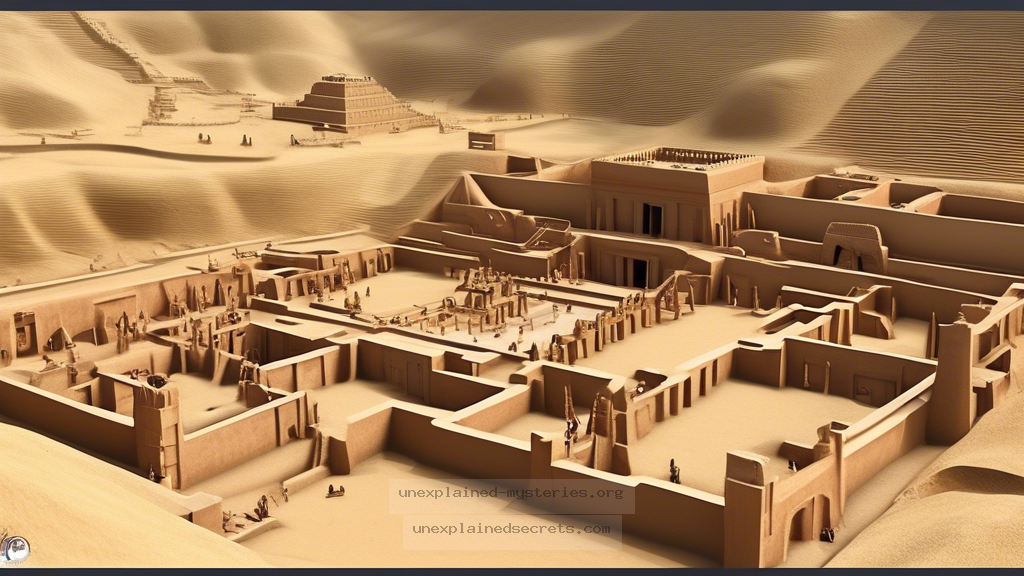What Happened to the Advanced Civilization of the Indus Valley?
What Happened to the Advanced Civilization of the Indus Valley?
The Indus Valley Civilization (IVC), one of the world’s oldest urban cultures, has long intrigued historians, archaeologists, and enthusiasts of the paranormal and unexplained. Spanning from approximately 3300 BCE to 1300 BCE, this civilization thrived in the northwestern regions of South Asia, covering parts of modern-day Pakistan and northwest India. Its sudden decline remains one of the most compelling mysteries in the study of ancient civilizations. This post delves into the various aspects that surround this enigma, exploring potential reasons for the downfall of this remarkable culture.
Historical Context of the Indus Valley Civilization
The Indus Valley Civilization was characterized by advanced urban planning, sophisticated drainage systems, and remarkable architectural achievements. Cities like Harappa and Mohenjo-Daro featured grid layouts, multi-story buildings, and evidence of a centralized authority. The society engaged in trade, metallurgy, and agriculture, indicating a high level of economic complexity.
Despite its advancements, the IVC’s script remains undeciphered, which complicates our understanding of its social structure and cultural practices. Archaeological evidence suggests that the civilization was remarkably uniform in its architecture and urban planning, pointing to a shared cultural identity. However, around 1900 BCE, the civilization began to decline, leading to the abandonment of major urban centers and a significant reduction in population.
Core Concepts and Theories Behind the Decline
Numerous theories have been proposed to explain the decline of the Indus Valley Civilization. These theories can be broadly categorized into environmental, economic, and social factors.
- Environmental Changes: Climate change and natural disasters, such as floods or earthquakes, may have significantly impacted the agricultural base of the civilization.
- Economic Decline: Disruptions in trade networks and resource depletion could have led to economic instability.
- Social Disintegration: Internal conflict or social upheaval may have contributed to the collapse of centralized authority.
Each of these theories offers a different lens through which to examine the decline of the IVC. Researchers continue to sift through archaeological data to ascertain which, if any, of these theories hold water.
Environmental Factors: Climate Change and Natural Disasters
One of the most compelling theories surrounding the decline of the Indus Valley Civilization is that of environmental change. Several studies suggest that the region underwent significant climatic shifts around 2000 BCE, transitioning from a relatively wet climate to a much drier one. This change would have impacted agricultural productivity, leading to food shortages and population decline.
Additionally, research indicates that the rivers which once nourished the IVC may have changed course or diminished in size, further exacerbating agricultural challenges. Some scholars argue that seismic activity could have triggered catastrophic flooding or significant land shifts that undermined urban infrastructure.
Economic Factors: Trade Disruptions and Resource Depletion
The Indus Valley Civilization was part of a broader trade network that spanned across the Indian subcontinent and into Mesopotamia. The decline of trade routes due to changing political landscapes, natural disasters, or resource depletion could have severely affected the economy of the IVC. As trade diminished, cities may have lost their economic vibrancy, leading to further urban decline.
Archaeological evidence suggests that the inhabitants of the IVC relied heavily on trade for essential goods, such as metals and luxury items. The depletion of local resources, such as timber and minerals, could have made it increasingly difficult for the civilization to sustain itself.
Social Factors: Internal Conflict and Social Upheaval
While environmental and economic factors are often emphasized in discussions of the IVC’s decline, social factors should not be overlooked. The possibility of internal conflict or social strife is a compelling aspect of the mystery. As resources became scarce and trade diminished, it is plausible that competition for dwindling resources could have led to social unrest.
Additionally, the lack of a deciphered script hinders our understanding of the societal structure of the IVC. Some researchers suggest that the civilization may have been highly stratified, making it susceptible to internal divisions. Discontent among different social classes could have led to fragmentation.
Comparative Analysis: The IVC and Other Lost Civilizations
The mystery of the Indus Valley Civilization’s decline shares similarities with other lost civilizations, such as the Maya and the Ancient Egyptians. Below is a comparative table that highlights key aspects of these civilizations:
| Civilization | Location | Peak Period | Decline Factors |
|---|---|---|---|
| Indus Valley | South Asia | 3300-1300 BCE | Environmental changes, trade disruption, social upheaval |
| Maya | Mesoamerica | 250-900 CE | Drought, warfare, social strife |
| Ancient Egypt | Northeast Africa | 3150-30 BCE | Invasions, economic decline, climate change |
This table illustrates that while the specific circumstances surrounding each civilization’s decline differ, common themes such as environmental stress and social conflict are prevalent.
Common Misconceptions and Clarifications
One of the most common misconceptions about the Indus Valley Civilization is that it simply vanished overnight. In reality, evidence suggests a gradual decline, with urban centers being abandoned over several centuries. This slow decline complicates our understanding and adds to the mystery.
Another misconception is that the civilization was homogeneous. In truth, the archaeological record indicates diversity in cultural practices, trade goods, and even architectural styles, suggesting a more complex socio-political landscape than previously assumed.
Best Practices for Investigation and Study
For those interested in investigating the mysteries of lost civilizations like the Indus Valley, several best practices can enhance research efforts:
- Multi-disciplinary Approach: Incorporate insights from archaeology, anthropology, climatology, and history to build a more comprehensive understanding.
- Field Studies: Engage in archaeological fieldwork to uncover new evidence and challenge established narratives.
- Collaboration: Work with experts from various fields to share findings and develop a more nuanced perspective.
Future Developments and Ongoing Research
Research into the Indus Valley Civilization is ongoing, with new technologies such as satellite imagery and ground-penetrating radar revealing previously hidden sites. Scholars are also making strides in deciphering the IVC script, which could unlock new insights into the civilization’s structure and beliefs.
Moreover, interdisciplinary research focusing on ancient climate patterns is vital for understanding the environmental factors that may have contributed to the civilization’s decline. As technology continues to advance, our understanding of this enigmatic civilization may evolve significantly.
Conclusion
The mystery surrounding the decline of the Indus Valley Civilization remains one of the most intriguing puzzles in the study of ancient cultures. Whether it was environmental changes, economic disruptions, or social upheaval that led to its downfall, the IVC offers valuable lessons about the fragility of civilization and the interconnectedness of human societies. As ongoing research continues to shed light on this ancient enigma, we may finally piece together the story of a civilization that once thrived and then vanished into the annals of history.
Other Articles
Recent Posts
- What Happened to Flight MH370? The Conspiracy Theories That Still Haunt Us
- What Secrets Lurk Within the Walls of the Infamous Trans-Allegheny Lunatic Asylum?
- What Evidence Supports the Existence of Bigfoot in the Pacific Northwest?
- What Happened to the Indus Valley Civilization? Unraveling the Mysteries of Ancient Urban Life
- Can Telepathy Be Scientifically Proven Through Laboratory Evidence?







